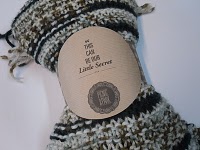Brief: Create three design direction boards showing research based on our rationale.
1. Problem 2. Evidence 3. We Intend To...
Rationale
Group Members - Claudia, Chloe, Liv, Ryan, Sadie & SimonProblem - What secrets and surprises can you find in Leeds?Evidence - Our variation of photographs of Leeds as a group and our personal experiences, along with the opinions of others found in our research.We Intend To - Discover the secret surprises of Leeds and find a way to communicate them to the appropriate audience.
Primary and Secondary Research
Primary Qualitative: Pictures of St George's field, our opinion was that it was quiet and secluded. We asked a resident and they said that they liked going to St George's because it is quiet and not full of students. As a group we decided that there is a lack of non-student places to go in Leeds.
Secondary Qualitative: 'Bakelady's homemade tearoom'. Bakelady doesn't reveal her address until days before the booking to keep it secret. She referred to it as the 'underground tearoom' and a magazine article has said that it is exceptional value with excellent homemade food and is a completely different way to spend your afternoon.
Primary Quantitative: We created a 'Secret Leeds' Facebook group- out of 20 members 3 replied, although this didn't help us to find more places it supported our thought that not many people know the hidden secrets of Leeds.
Secondary Quantitative: 4 out of 5 leaflets and magazines we looked at were aimed mainly at students.
Progress Crit
Generally our ideas of a secret tea party in Leeds was well liked by the group and they could all see it working well as a live brief. Also after researching 'secret Leeds' we found a similar project to do with London, which has been executed and worked well in the real world. The main point that was brought up in our crit was that if our idea was to be executed well the branding had to be appropriate, but most of all consistent.
Direction boards presented in crit:
Research
Evidence
What we did
Final pieces:
Map
Poster
Going live
Self Evaluation
What problem did you identify?
That there is a lack of places to go in Leeds to escape the student life. Because Leeds is buzzing with students all the places to go seem to be aimed directly at students, leaving nowhere for the residents or even students that don't have the typical stereotypical lifestyle. In the hustle bustle of busy Leeds it is hard to find somewhere quiet and secluded to escape to.
What evidence did you find to support your decisions?
We made a Facebook group, showing the lack of knowledge of quiet places to go in Leeds, also we gathered all flyers, leaflets and posters that were available to us, the majority of them advertising cheap student nights out. This evidence backed up our idea, showing that there is a gap in the market for what we intend to do.
What methods did you use to gather your evidence and what forms did it take?
we used a variation of quantitative, qualitative, primary and secondary research. These included setting up a Facebook group, questioning our classmates and residents of Leeds, our own opinions, gathering leaflets and researching websites to delve further into the 'Bakelady's' concept of a hidden tearoom.
What methods of research did you find useful and why?
I think both the Facebook group and questioning people who actually live in Leeds proved very useful because they're our potential audience that will be using the 'Picnic in a Park' service.
5 things that I have learnt about the design process.
- To back up your ideas with solid research, because your opinions on a topic isn't always necessarily the right one to go with.
- To put yourself in somebody else's shoes to think what your potential target might respond to.
- That working in a group is hard! Value other peoples deigns and embrace the fact that their is a varied amount of opinions and design styles.
- Don't go with your first idea, even if it seems brilliant. Elaborate on it and test it out before going live.
- Dont stick to one form of research, their are loads of ways to get information, the more varied the more informed you are and the more solid it makes your idea.
5 things I would do differently next time.
- Do more work in the first week to allow for more time to put or idea out into the public.
- Organise more time to work as a group, and not only discuss our ideas but to design together.
- Make sure all members of the group contributed equally, not only to the final designs but to the initial research and development process.
- Make an action plan to organise ourselves as a group and to make sure that its a team effort.
- Think of better ways to make this a live brief and record the reactions of the public to find if our idea would really work practically.

















